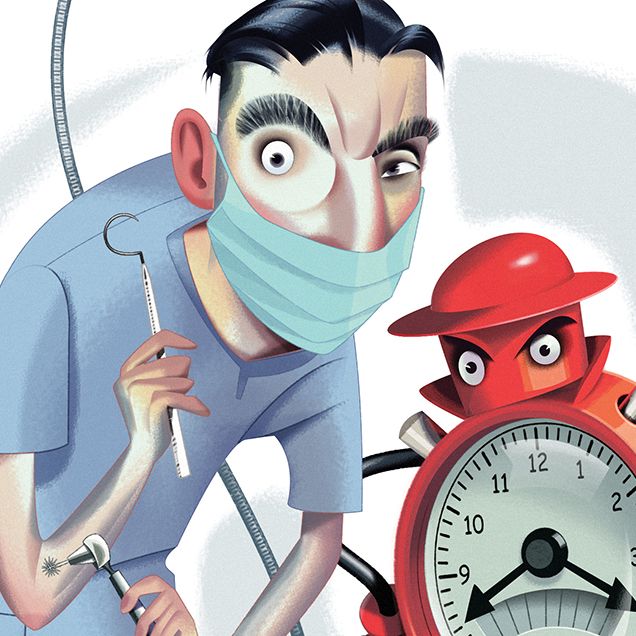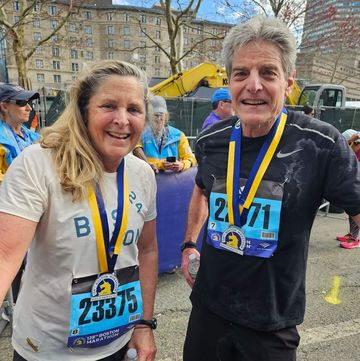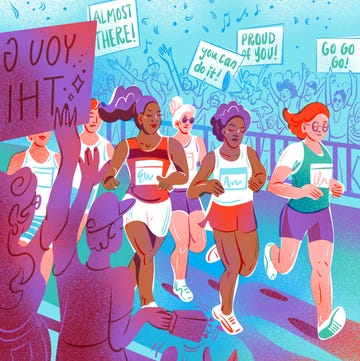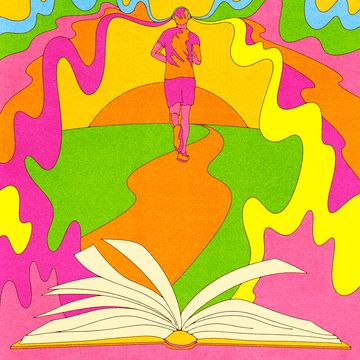Psychologists are great. They have a word for everything.
Take experiential avoidance, for instance. (Okay, that’s two words. Indulge me.) Experiential avoidance, as described in a research paper out of George Mason University, “is a process involving excessive negative evaluations of unwanted private thoughts, feelings, and sensations, an unwillingness to experience these private events, and deliberate efforts to control or escape from them.”
In other words, it’s the human tendency to steer clear of things that hurt. “Pain bad,” our reptilian brains tell us. “Pleasure good.”
This isn’t exactly groundbreaking, I know. But I’ve been thinking a lot lately about our natural aversion to pain and suffering, the nature of fear and dread, and my own talent for procrastination. In short, I’ve been thinking a lot about experiential avoidance.
Why? Because I recently booked two long-overdue dates, both of which involve all those things—pain, suffering, fear, and dread. One was with a dentist for a checkup. The other was with my running club for a speed workout.
Superficially, these two things seem pretty dissimilar. In many ways they are. Speedwork is voluntary, for one thing, and you alone are in charge of dispensing the pain. If it hurts too much, you can just dial back the dosage. And feel like a failure.
Not so much when you’re reclining in the dentist’s chair. There you are powerless, a turtle on its back, with a spotlight in your face and someone else’s fingers in your mouth, and you’re gripping the armrests like you’re strapped into a turboprop that’s just lost its starboard engine.
At least the dentist can offer you drugs.
Dental work and speedwork, however, have more in common than you might think. They both involve discomfort, and sometimes pain. Because of this you don’t exactly look forward to either of them. Still, you know they’re important. So you show up at the appointed time and do what you’ve gotta do.
Until one day you don’t. Which is where things can start to unravel.
What I realized as time dragged on—and this is the most wicked similarity of all—is that the longer you put off either of these things, dental work or speedwork, the harder it becomes to motivate yourself to resume doing them.
In my case, that looked something like this: Two years ago, we moved across the country. At the time, I’d been seeing my dentist every six months and making some sort of speedwork—intervals, tempo runs, whatever—a fairly regular part of my running. I was in a groove, oral health-wise and VO2 max-wise.
As we settled in our new home, I had a hundred things to do, from setting up an LLC for my new freelance writing business to installing bookshelves. “Find a dentist” was on that list, but it wasn’t anywhere near the top. “Do speedwork” didn’t make the list at all.
A month went by. Then two. Then six, 10, 14…I was living that old movie trope where an off-camera fan blows the pages off a desk calendar, one by one.
The longer I postponed seeing the dentist, the more painful I imagined the visit would be, which encouraged further postponement. And so on.
Same deal with jumping back into speedwork. The longer I put it off, the more painful I imagined my first time back would be. Which made it that much easier to put off. Which further increased the potential for pain. Which made it that much easier to put off. And so on.
It’s pernicious stuff. It’s also extremely common, says Joseph R. Ferrari, Ph.D., a professor of psychology at DePaul University and author of Still Procrastinating? The No-Regrets Guide to Getting It Done.
“People ‘awfulize’ things,” explains Ferrari. “They think, they ruminate, they worry—’It’ll be awful!’ In the end, it’s rarely as bad as they think it’s going to be.”
Ultimately, as noted, I sucked it up. After two years of delay and dithering, I went to my running club’s weekly speed workout. Two days later I was sitting in the waiting room of my new dentist, surrounded by adult contemporary music and old magazines.
Ferrari was right. Neither experience was even remotely as bad as I’d imagined. In fact they were both pretty underwhelming. The speed workout was a simple fartlek-style run, following a 2-1-1-2 pattern—2 minutes at 5K pace, 1 minute easy, 1 minute at 5K pace, 2 minutes easy. After the warmup, I did four sets of those and called it a day. It was uncomfortable, of course, and a sobering reminder of how much catching up I had to do. But it was a start. And it didn’t kill me.
The dentist, for her part, turned out to be fantastic. She found a few very minor things, nothing big, and urged me to floss more often. I made a follow-up appointment and went home with a new toothbrush.
For those keeping score at home: That’s two years’ worth of low-level dread and guilt that I endured, by choice, on two health-related fronts. For nothing.
Suddenly something else Ferrari had said made a lot more sense.
When I first described my predicament to him, those dual vicious circles I’d gotten stuck in, and blamed procrastination, he gently corrected me.
“What you’re describing isn’t really procrastination,” he said. “Instead it’s called ‘choosing to suffer’ in social psychology. It’s a general avoidance thing that compounds itself.”
That sounded odd to me. I mean, what is a speed workout if not “choosing to suffer”? On a lesser scale, what is running if not “choosing to suffer”?
Then it hit me: Suffering is a constant. It’ll be there no matter what. Do your speed workout and you will suffer. Put it off for weeks or months (or years) and you’ll suffer. Run today and you may suffer, at least a little bit. Skip it and you’ll suffer for that, too. Skip a bunch of runs and you will definitely suffer.
If you run regularly, even a little, you know what I mean.
When we avoid doing things that we think will be unpleasant, the delay itself becomes a form of suffering. And it yields exactly zero benefit. Call it the hidden cost of experiential avoidance.
My advice, when it comes to speedwork: Go get it done. You might as well choose the kind of suffering that makes you faster.
And while we’re at it, when’s the last time you saw your dentist?














